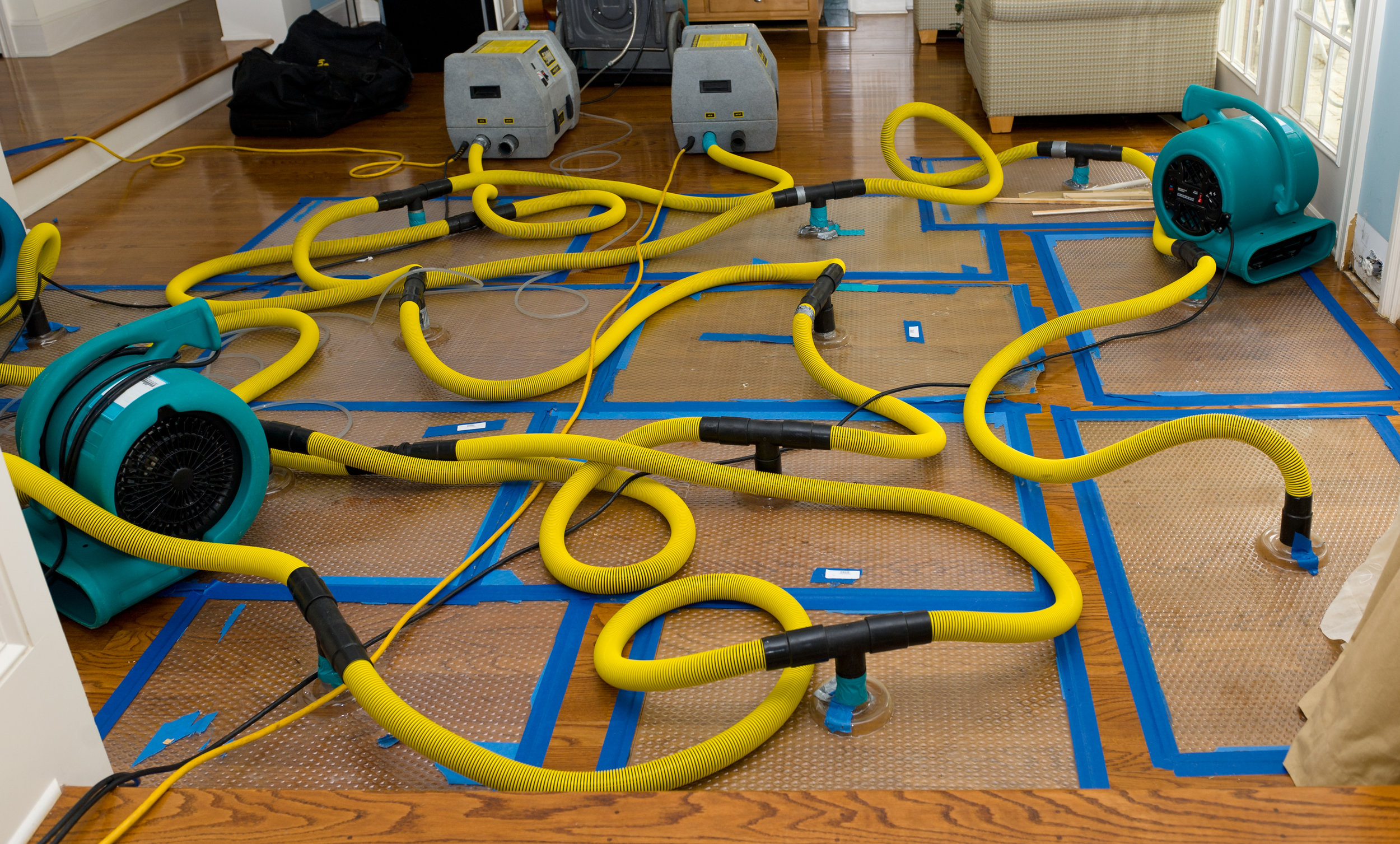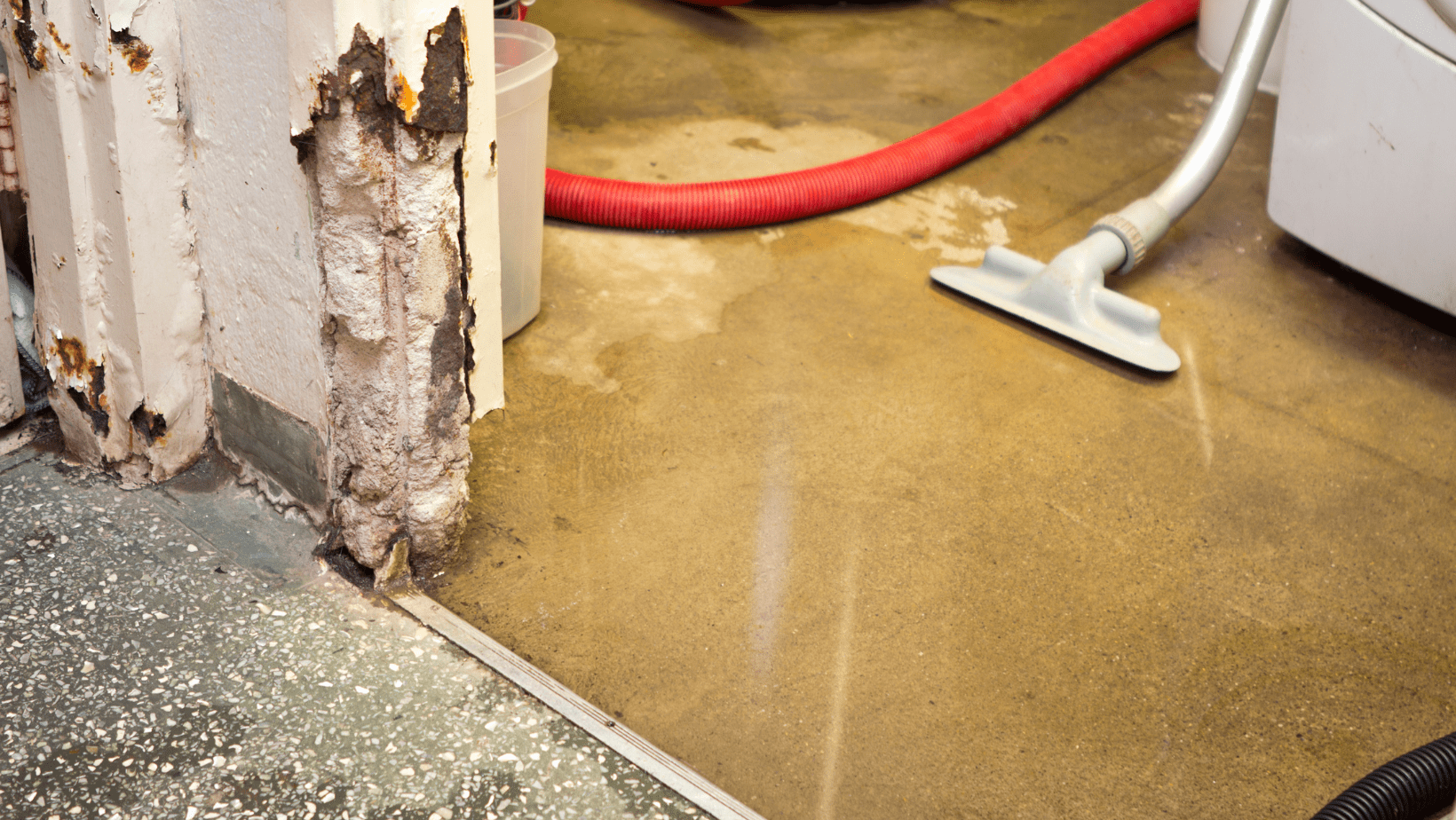Common Myths About Water Damage Cleanup Debunked
Wiki Article
Vital Steps to Comply With for Effective Water Damage Restoration in your house
When confronted with water damages in your home, recognizing the important actions for efficient reconstruction can make all the difference. You need to evaluate the damages and guarantee security before dealing with the trouble. Stopping the source of water is crucial, however it's simply the beginning. As soon as you've handled that, there's a collection of actions you need to take to secure your building from further problems. Allow's discover what you must do next.Assess the Damage
When you uncover water damages in your home, the initial step is to analyze the damages thoroughly. Beginning by identifying the source of the water invasion. Check for leakages, ruptured pipelines, or various other concerns causing the problem. Next, analyze the impacted locations for noticeable indicators of damages, consisting of bending, discoloration, or mold and mildew development. Do not neglect to search in surprise places like behind wall surfaces or under floor covering, as water can leak into these areas unnoticed.Document the damages by taking clear pictures and notes. This will certainly aid you when talking about the scenario with your insurance provider or restoration specialists. Take notice of the kind of materials affected, as various products need different restoration strategies. Examine the extent of the damages. Is it small or substantial? Recognizing the scope will certainly assist you in choosing whether to manage it yourself or contact the experts for an extra substantial remediation procedure.
Make sure Safety and security
Prior to you begin any kind of reconstruction work, guaranteeing your safety is vital. Evaluate the condition of your home. If the water's deep or if you discover electrical hazards, don't get in the location. Switch off the power and gas supply to protect against crashes. Put on safety gear like boots, masks, and gloves to secure on your own from pollutants or mold.It's crucial to remain conscious of your environments; watch for sharp objects and unsafe surface areas. If the water is from a sewage backup, treat it as unsafe waste. Keep children and pets away from influenced areas to stay clear of exposure.Once you have actually taken these preventative measures, you can wage the remediation process. Keep in mind, your security comes initially, and if you're ever before unsure, it's ideal to consult a specialist. Taking these steps will certainly assist guarantee you're all set to tackle the reconstruction safely and effectively.Quit the Source of Water
After guaranteeing your security, the following step is to quit the source of water. Recognize where the leak is originating from. Maybe a burst pipe, a defective device, or perhaps heavy rain entering with a harmed roofing system. Transform off the main water supply to your home to stop more flooding if it's a plumbing problem. For devices, unplug them and turn off their water supply valves.If the source is outdoors, like rain, try to divert it away from your home utilizing sandbags or various other obstacles. For minor leaks, you could be able to make use of tape or a sealant briefly up until a specialist can fix it. Keep in mind, dealing with the resource promptly is crucial to reducing damage and protecting against mold and mildew growth. Once you've stopped the water, you'll remain in a better placement to proceed to the following action in the reconstruction procedure.
Eliminate Excess Water
Act quickly to get rid of excess water, as standing water can result in extra substantial damage and mold and mildew development. Initially, gather your devices: a wet/dry vacuum, containers, and towels. You can make use of towels to soak up the wetness if the water is superficial. For deeper water, a wet/dry vacuum is your best choice. See to it to clear the vacuum often to stay clear of overflow.If the water is infected, like from a sewer backup, use safety gear, consisting of handwear covers and masks, to maintain yourself risk-free. As soon as you've eliminated as much water as feasible, check for covert pockets of dampness in edges and under furniture, as these can harbor mold.Don' t fail to remember to transform off electric appliances and power outlets in damp locations to prevent risks. This first action is vital in lessening damages and establishing the stage for a successful remediation procedure.Dry and Dehumidify the Location
It's vital to completely dry and evaporate the location extensively as soon as you have actually removed the excess water. Start by utilizing dehumidifiers successfully to draw wetness out of the air and stop mold and mildew development. Watch on humidity levels to ensure the room dries out entirely.Get Rid Of Standing Water
To successfully take on water damages, you need to focus on eliminating standing water as rapidly as possible. Start by gathering necessary tools, like a wet/dry vacuum cleaner or a pump, relying on the quantity of water. If the water is superficial, a vacuum cleaner ought to suffice. For larger quantities, a pump is extra efficient. While working, make sure to wear safety gear to keep on your own risk-free from pollutants. As you remove the water, take notice of concealed areas like under furniture or in edges where water may collect. Once you have actually gotten rid of the majority, your room will certainly begin to dry. This step is important, as lingering water can bring about mold development and a lot more substantial damage.Usage Dehumidifiers Efficiently
How can you properly utilize dehumidifiers to completely dry and dehumidify your space? Begin by placing your dehumidifier in one of the most affected location, ideally where water damages is most severe. Make certain to shut all doors and windows to create a covered environment. Switch on the dehumidifier and set it to the proper moisture level, generally around 30-50%. Empty the water collection container frequently, or take into consideration utilizing a version with a continuous drain option for convenience. Ideally, utilize followers to enhance air flow, aiding the dehumidifier work a lot more efficiently. Keep the dehumidifier running till you're certain that the location is thoroughly dried out, protecting against mold growth and additional damage (Smoke Damage Restoration). This step is essential for effective water damage reconstructionDisplay Moisture Levels
Tracking moisture degrees is important during the drying procedure, as it assists assure your room remains devoid of excess dampness. Spend in a reputable hygrometer to track moisture properly. Preferably, you desire to keep levels between 30% and 50%. You may require to adjust your dehumidifiers or followers to boost air movement if moisture analyses increase above this range. Check the readings frequently, particularly in areas susceptible to moisture, like restrooms or basements. If you discover consistent high humidity, consider enhancing ventilation or using additional dehumidifiers. Remaining on top of these degrees not only speeds up the drying out procedure however also prevents mold and mildew development, guaranteeing your home remains comfortable and safe.Tidy and Disinfect Affected Surfaces

Recover and Fix Your Home
After cleansing and disinfecting the impacted locations, it's time to bring back and repair your home. Begin by examining the damage. Look for architectural problems, like compromised floorings or wall surfaces, and deal with any essential fixings. Replacing harmed drywall or floor covering is necessary for both looks and safety.If your furniture or items were impacted, consider whether they can be restored or require replacement. Tidy or professionally recover items where possible.Next, repaint wall surfaces and touch up any kind of areas that need focus. This not only enhances look but likewise protects surfaces from future water damage.Don' t neglect to check your pipes and devices for leaks, making sure everything's working effectively. Finally, think about mounting a dehumidifier to stop future moisture issues. By taking these steps, you'll restore your home to its former magnificence and develop a more secure living setting.Frequently Asked Questions
For How Long Does Water Damages Reconstruction Generally Take?
Water damage repair commonly takes anywhere from a couple of days to several weeks, depending on the extent of the damage (Flood Damage Restoration). You'll intend to examine the scenario promptly to decrease more complications and guarantee proper restorationWill My Insurance Cover Water Damages Restoration Prices?
Your insurance coverage could cover water damages remediation expenses, however it depends on your policy. Examine your insurance coverage information and call your insurance coverage representative to clarify what's consisted of and what you need to file a claim.
Can I Handle Water Damages Repair Myself?
You can manage water damage restoration on your own, however it's important to assess the situation. If it's extensive, you could wish to call professionals. Constantly prioritize safety and security and ensure you have actually got the right tools.What Are the Indicators of Hidden Water Damage?
You could observe signs of surprise water damage like deformed walls, stuffy odors, or staining. If your floors feel squishy or you area mold and mildew, it's time to examine further before the scenario aggravates.How Can I Avoid Future Water Damage in My Home?
To stop future water damages in your home, you should on a regular basis inspect plumbing, seal fractures, keep gutters, and guarantee appropriate water drainage. Mounting a sump pump and moisture barriers can likewise aid maintain your space dry. When you find water damages in your home, the first action is to assess the damage completely. Act quickly to eliminate excess water, as standing water can lead to a lot more considerable damage and mold growth. To successfully deal with water damages, you require to concentrate on getting rid of standing water as promptly as feasible. As you get rid of the water, pay attention to concealed locations like under furnishings or in edges where get more info water could accumulate. Water damages restoration generally takes anywhere from a few days to several weeks, depending on the extent of the damage.Report this wiki page